Last-Minute NYC Holiday Gift Guide 🎁
We’ve created a holiday gift guide with presents for the intrepid New Yorker that should arrive just in time—


Even in the City of Light, there are abandoned metro stations. While this isn’t surprising given Paris’ vast underground catacomb network, the contrast between pristine Paris and the abandoned stations is striking. Fortunately, like New York City’s abandoned subway stations and unused levels, intrepid urban explorers have long been photographing these stations for the lay people to view.
Parisian trainspotters have for years hoarded a special secret. It’s located next to the Metro Station Villiers in the 17th arrondissement, in a storage track that used to be a terminal loop for Metro Line 3 (photo above) before it was extended. Inside, some very old trains lie dormant, their slumber undisturbed by regular visits by spray painters and photographers. Most of them are in an advanced state of decay. See more photos from our exploration here!
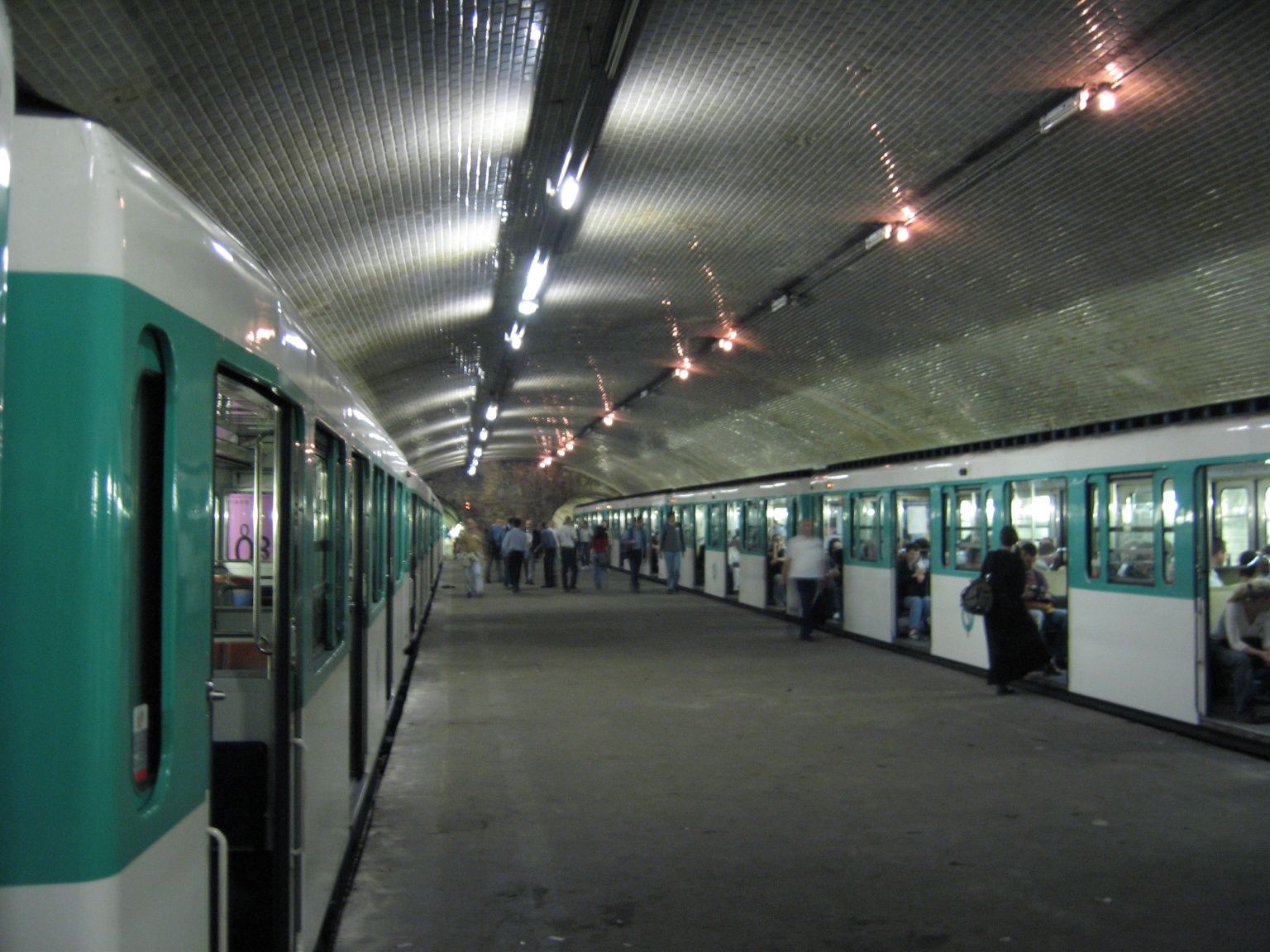
Porte Molitor before its abandonment, Image via Wikimedia Commons.
Not far from the abandoned Piscine Molitor, the swimming pool of Life of Pi fame, is the abandoned subway station, Porte Molitor. According to Urban Ghosts Media, the station was built in the early twentieth century but never used, full platforms “that have never served a single passenger.” The station was intended to serve the Parc des Princes station but today is used to store trains when the metro system is closed. There were no entrances built from street level or walking tunnels, so the photographer (Patch) who photographed the station had to bypass “intense security measures” in the underground network.
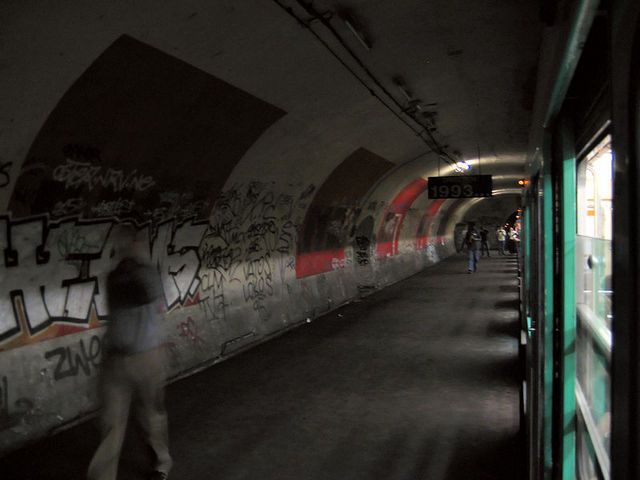
Photo by Gonioul via Wikimedia Commons
Like Porte Molitor, Haxo was never officially in use by passenger trains, nor does it have street-level entrances. Located in the 19th arrondisement, it was constructed during the 1920s between the 3bis and 7bis lines to connect Place des Fêtes to Porte des Lilas. Haxo is much more heavily graffitied compared to Molitor, but it was used to showcase a new subway car model in 1993. [Both images by Gonioul via Wikimedia Commons].
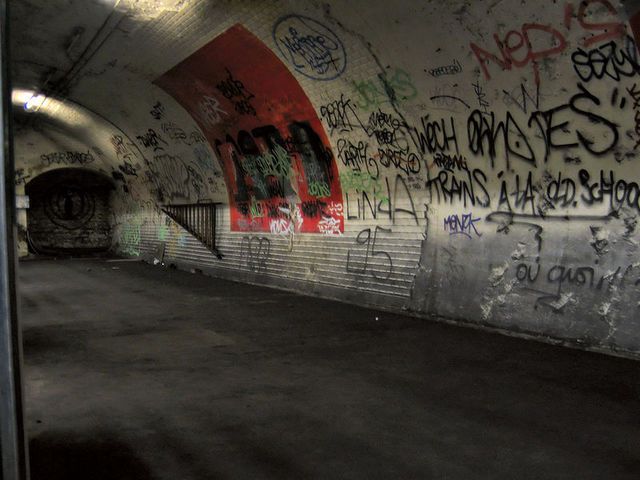
Photo by Gonioul via Wikimedia Commons
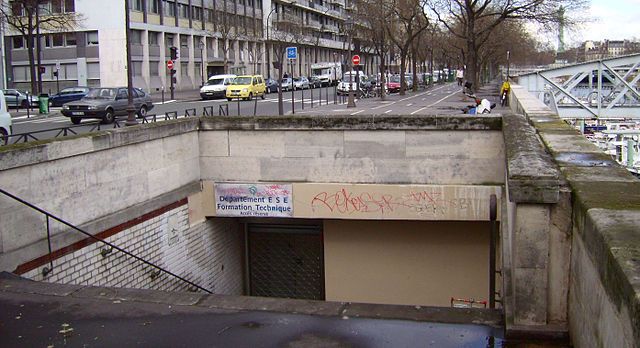
Image by ZeMeilleur via Wikimedia Commons
Along the 5 line is this decommissioned metro station, closed since September 2, 1939 when the last trained called here. According to Urban Ghosts, “Arsenal was one of several subway stations in the city to close due to the mobilization of CMP employees at the start of World War Two.” Such stations were deemed non-essential due to their proximity to other stations.
Today the only sign of this former subway station is this blocked off entrance along the Seine, between Bastille and Quai de la Rapée:
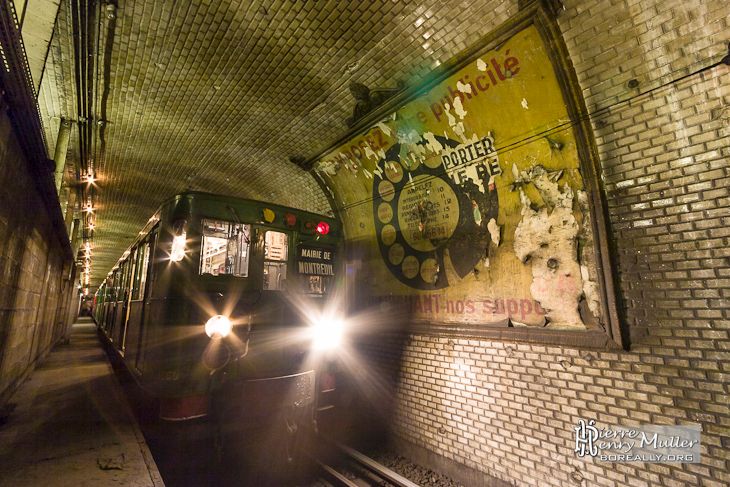
Image via Wikimedia Commons
Saint Martin was also closed in 1939 as World War II loomed. It opened briefly after the Liberation but was then permanently closed. Photos inside the Saint-Martin station, situated along Grand Boulevards, show vintage ads from the 1930s.
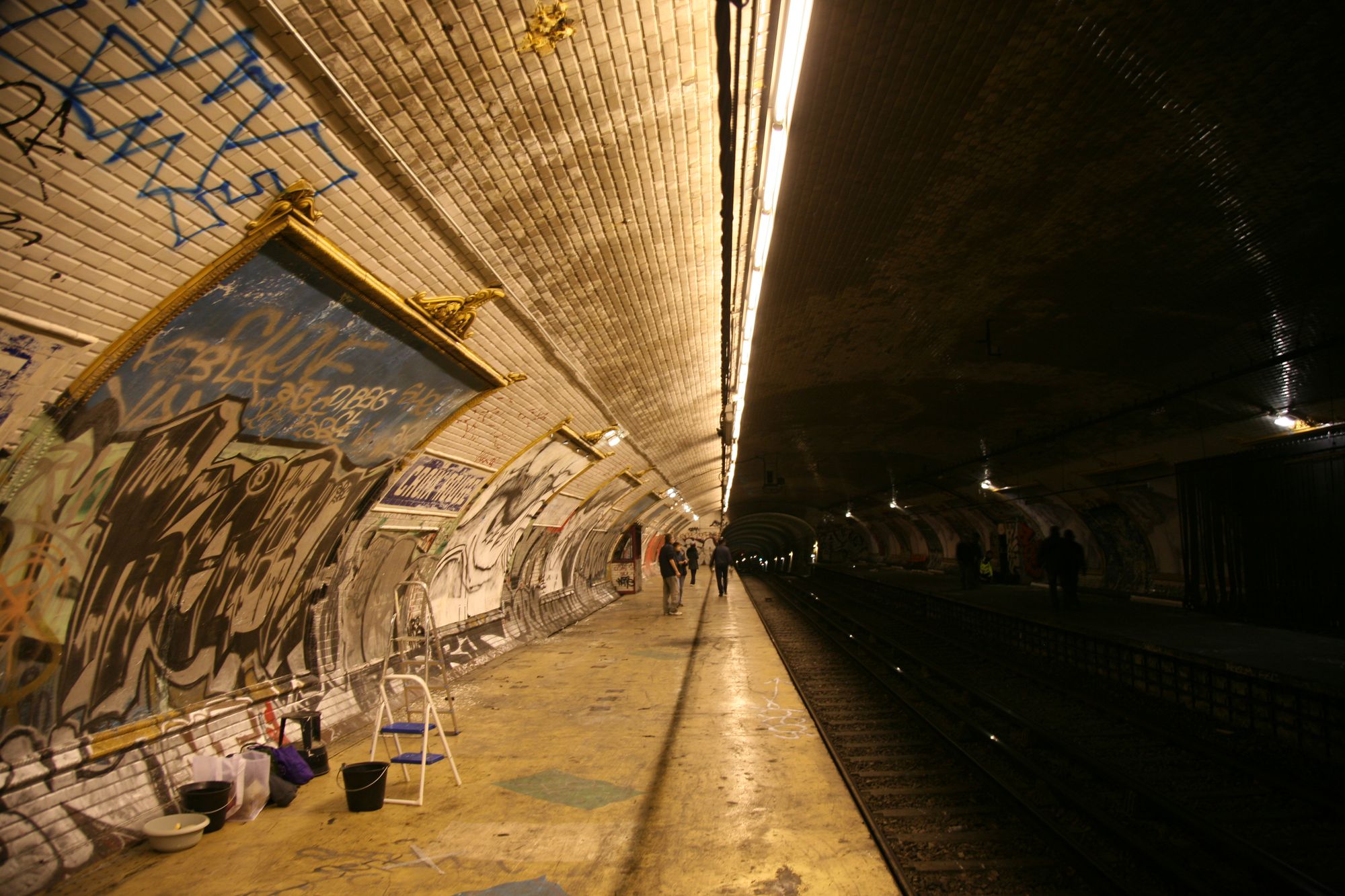
Image via Wikimedia Commons
Croix Rouge was originally the end station for Line 10, closed before WWII. The author of Pridian.net contends that it’s the only station in the system that hasn’t been repurposed in some way, even for non-passenger usage like Porte Molitor.
“The station has never been reused by the RATP (Parisian metro authority) as there is no easy access for RATP staff or clandestine visitors alike. The advertisements, seats and even the station masters booth can still be found on the platform…All that signals the existence of the station are two grills on the footpath. Take a close look and and you can catch a glimpse of the white tiles on the walls of the former station.”
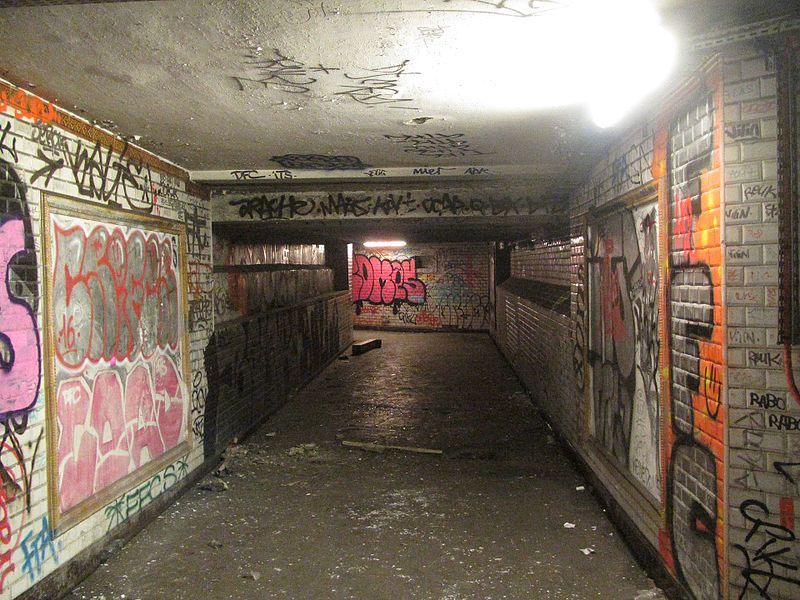
Image via Wikimedia Commons
According to Pridian.net, this station on Line 8 near the Eiffel Tower has been converted into an extraction vent. For those familiar with the Paris metro, it’s located right between the stops La Motte-Picquet – Grenelle and École Militaire. The author at Pridian.net also points out the existence of toilets (squat-style) in the original Paris metro system, most which have been converted into functional closets, signal rooms and the like.
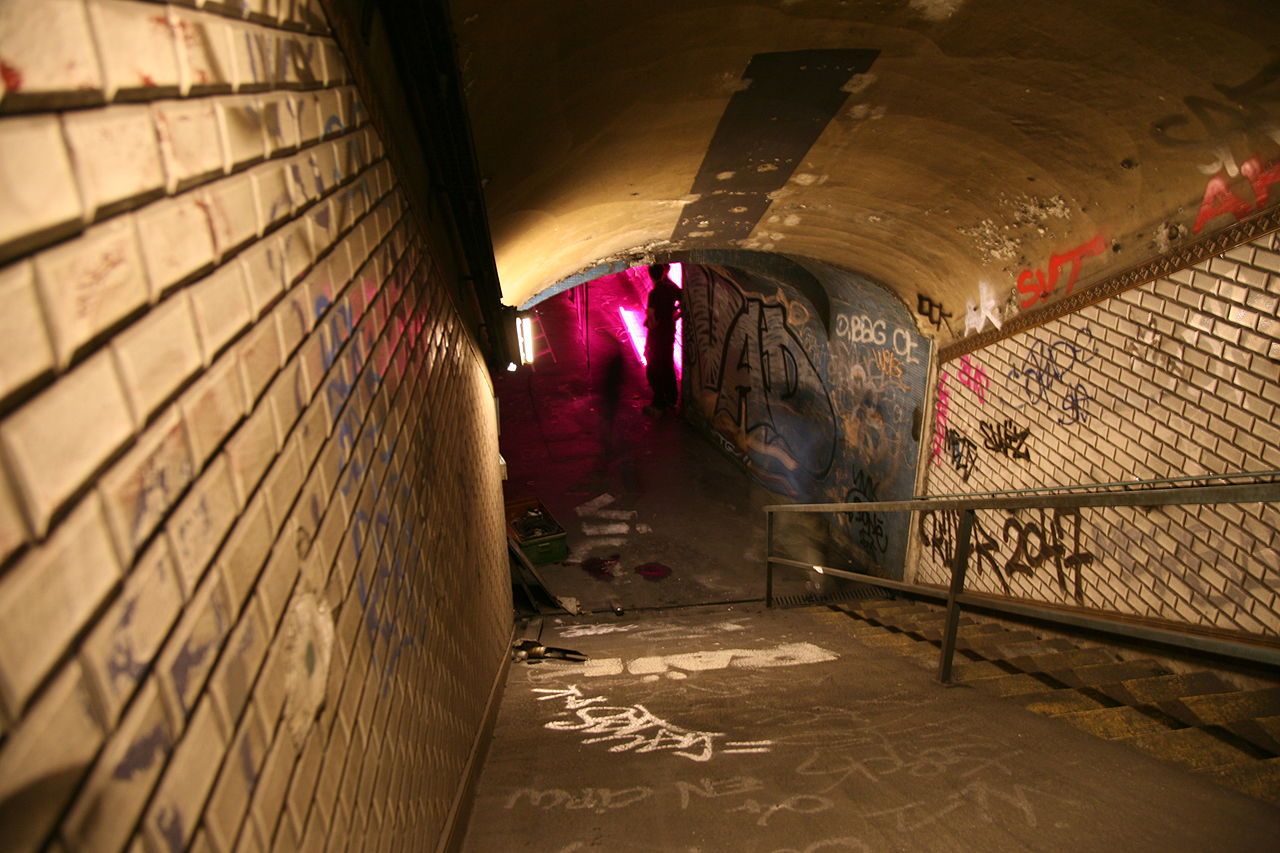
Image via Wikimedia Commons
Sleepycity discovered an abandoned tunnel that was converted into rolling stock storage, taking these gorgeous photographs in 2009 before authorities firmly locked the place down after a 200+ person party was broken up by police. The author called is “The One. That place in the system which sets itself apart from the rest. Like NYC’s City Hall or Sydney’s St James, this is Paris’ jewel.”
Metro cars from different eras:
Vintage first class car:
Check out these wild plans to repurpose some of these subway stations in Paris. Read more about New York City’s abandoned subway stations and its unused platforms and levels, hidden in plain sight. Get in touch with the author @untappedmich.
Subscribe to our newsletter